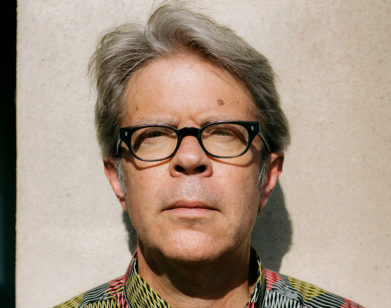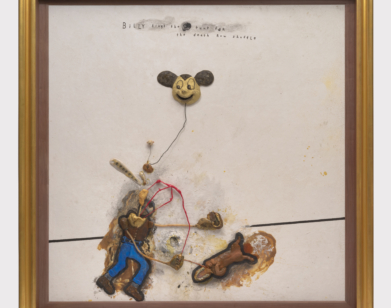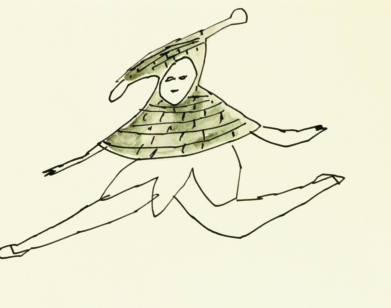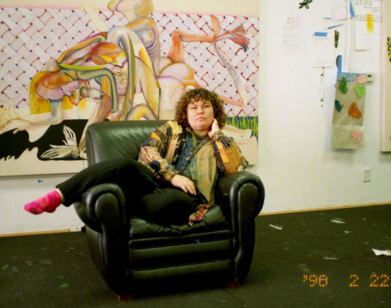María Berrío’s Multi-textural Latin American Dreamscapes
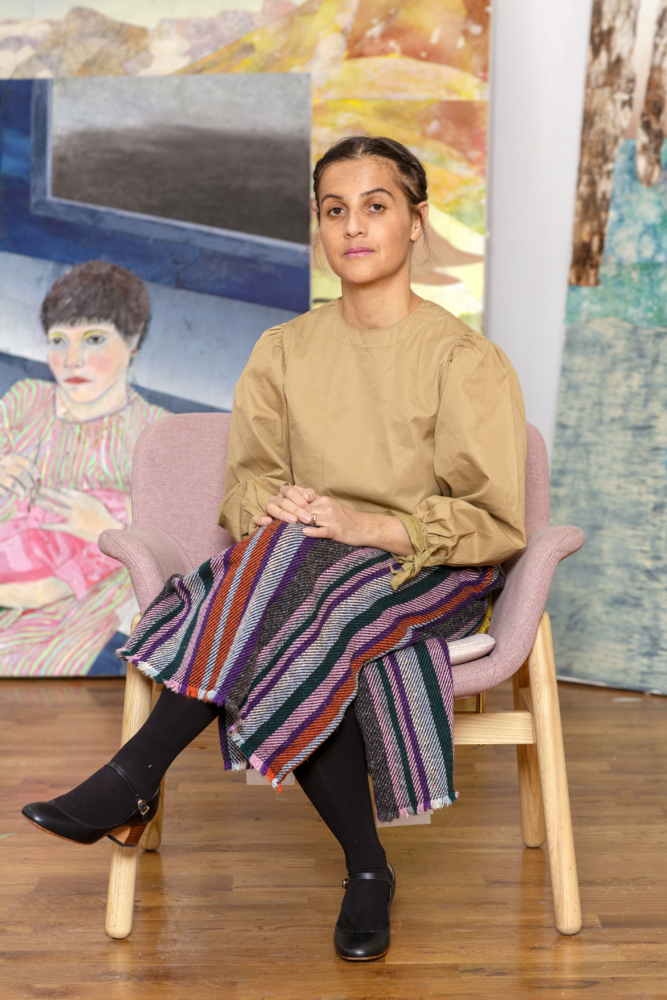
Photo by Brad Ogbonna. Courtesy the artist and Kohn Gallery.
To glance at a María Berrío work is to immerse oneself in a multi-textural wonderland, a vivid colorscape where women reign eternal—with cacti around their necks, no less. Berrío’s work, which consists of dreamlike collages of Japanese paper and watercolor, retain a unique concoction of hyper-specific textures that elevate the natural world to its hallucinatory imagination. Rose-flushed cheeks and blue clouds enliven the faces of women who gaze—confidently, longingly, hopefully—in the foreground, sometimes cradling a butterfly, sometimes splayed across a bed amidst the mountains. The Colombia-raised, Brooklyn-based artist is the latest to exhibit her work at Kohn Gallery in Los Angeles with A Cloud’s Roots—a title that nods to the artist’s concern with depicting the lives, dreams, and loves of immigrants, and the emotional impact of uprooting the self. In her home city, Berrío’s work can also be seen at the Whitney, as well as at the N subway stop at Fort Hamilton. “With this immigration crisis, people look for so many things, and don’t really worry or touch upon what is most important, which is the people. Who are these people and who are these families?” Below, Berrío walks us through A Cloud’s Roots, in all its utopian beauty—and fabulous clothes.
———
“A Cloud’s Roots”
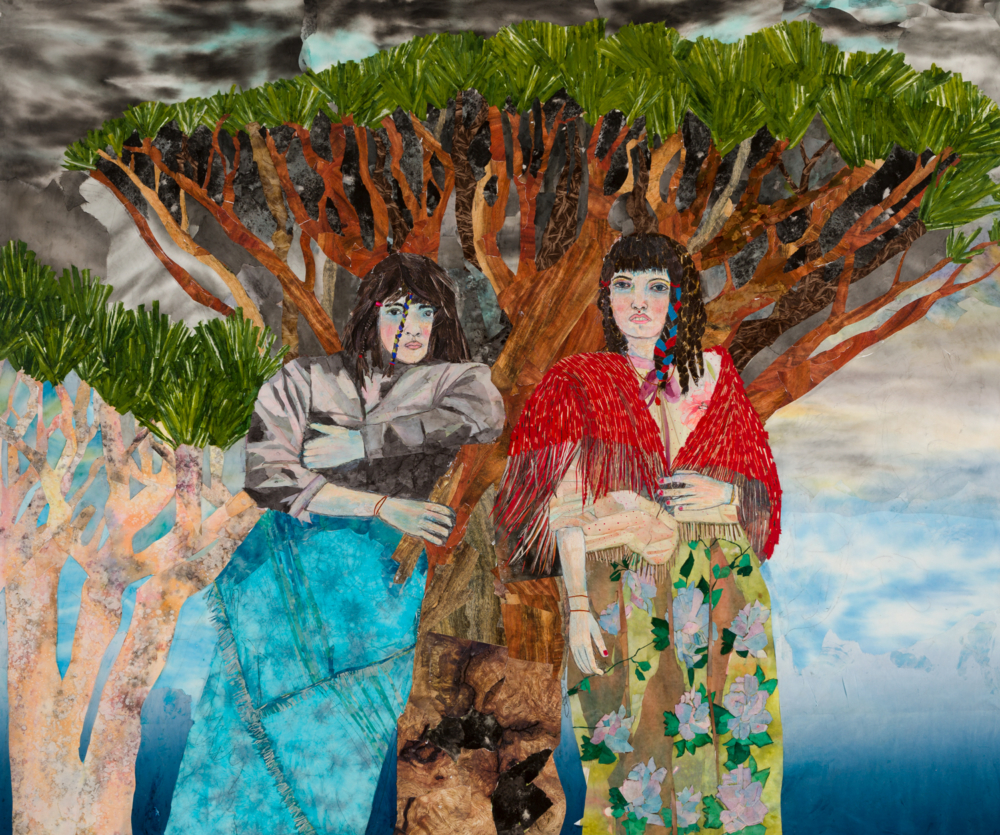
“‘A Cloud’s Roots’ features a fictional species of tree based on the dragon blood tree, found only on an island off the coast of Yemen. Over thousands of years, the dragon blood tree has adapted perfectly to the island’s desert-like climate and rocky soil, inhospitable to most other plant life. It is named after its distinctive red sap, a valuable commodity with medicinal and craft uses that has been traded for centuries. It is a powerful symbol of survival and resilience, able to thrive even in the most unlikely environments. The figures are compelled to leave their home in the forest, but they carry with them the knowledge that they too have the power to put down roots wherever they go, even in the sky.“
———
“Anemochory”
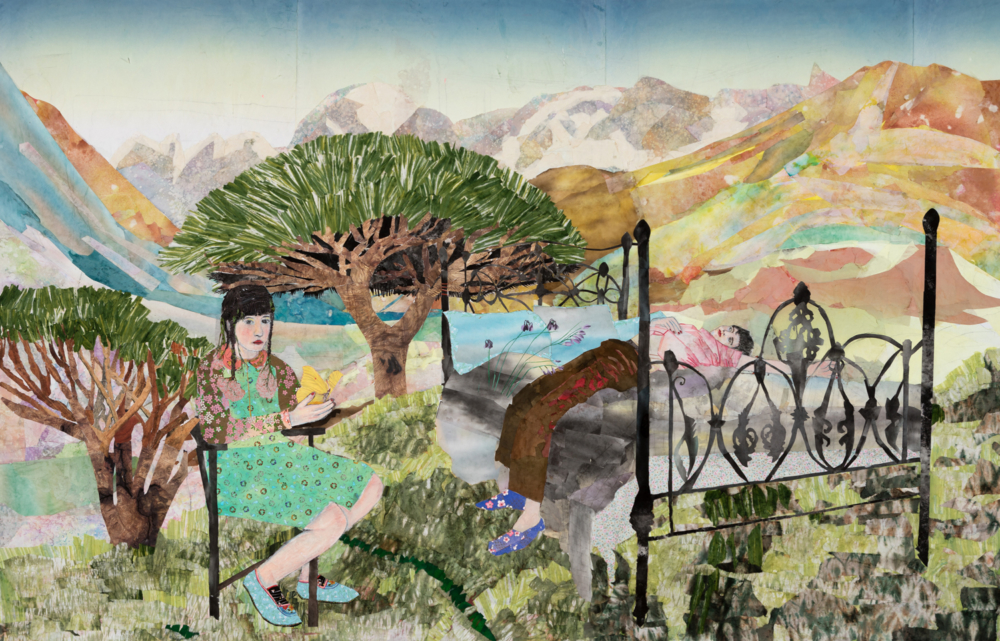
“You know those flowers that you blow and then all of the different seeds go into the sky? That’s anemochory—the dispersal of plant seeds by wind. Without any agency or control, the seeds rely on favorable conditions to take them to hospitable places. It’s not up to them where they are going. The women in the collage are also without control, and seem to be biding their time as they wait for the unknown to decide their fate. The fate of the figures is less certain than the fate of a seed, and yet the flowers on the bed suggest that nature will win in the end. People who are going through these transitions are going through the same idea of being not from here, not from there. Trying to maintain themselves in this limbo. The landscape is an imagined paradise. I am originally from Colombia and have been living in New York for 18 years, so Colombia makes its way into my paintings as a fantasy blended with reality.”
———
“The Dream of Flight”
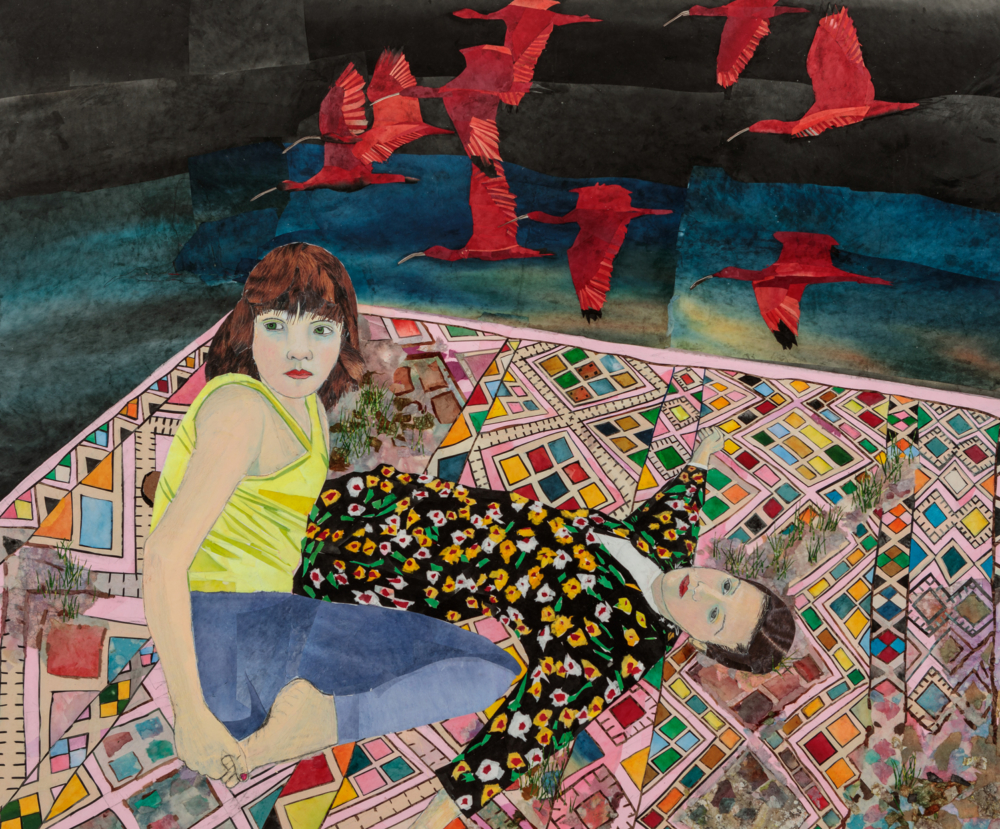
“In ‘The Dream of Flight,’ a reclining figure stretches her arms out like a bird, imagining what it would be like to take flight. It is a rare piece that’s a bit more autobiographical—the reclining figure looks like me and the patterns of the carpet and her dress come from my life. I have a similar carpet and a similar dress. The red birds in the distance are the scarlet ibis, native to South America. The figures dream of freedom and look to the birds flying overhead for hope, only to realize that freedom is impossible. I think the dress is from the brand Number 7. You can get it at Bird in Brooklyn.”
———
“Flower Mirror Water Moon”
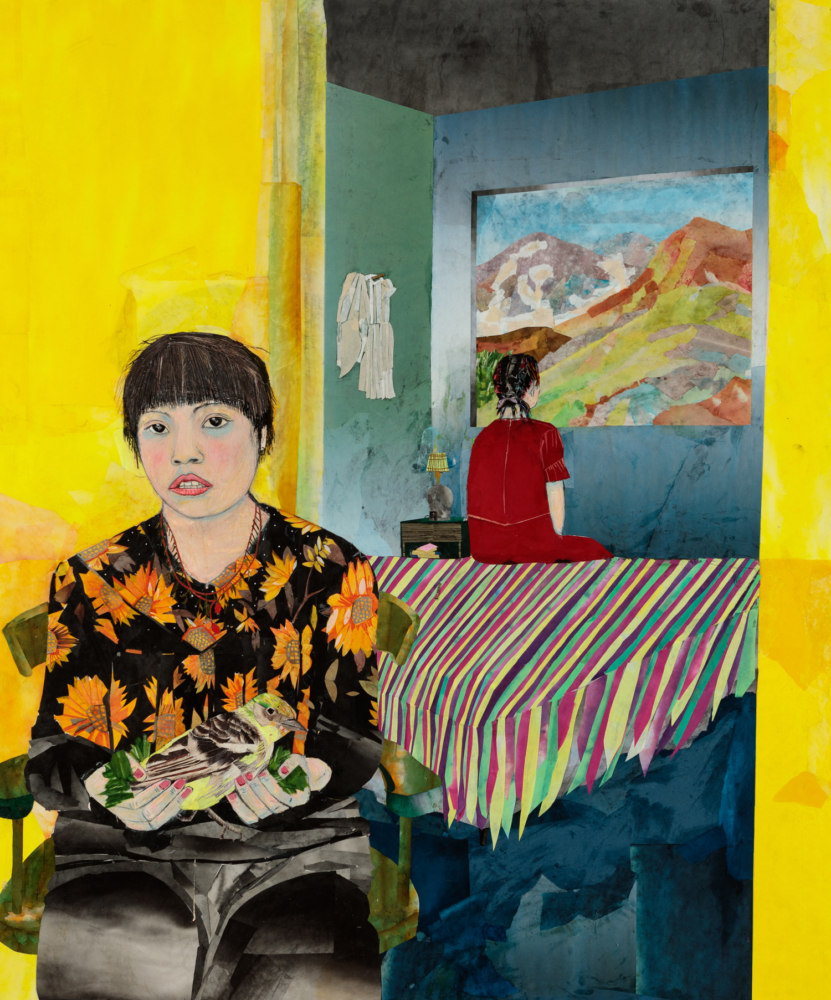
“In this painting, the patterns come not from life but from nature. To make the flower pattern of the woman’s shirt, I looked at various images of sunflowers, played with different colors and designs, and then I established a pattern. The interior space is brightly colored, and yet I kept it subtle and ambiguous so that all of the visual focus is on the characters. My work is first and foremost about the human condition. The woman’s gaze is most important, as it reveals what she is seeing and feeling.”
———
“Genipa”
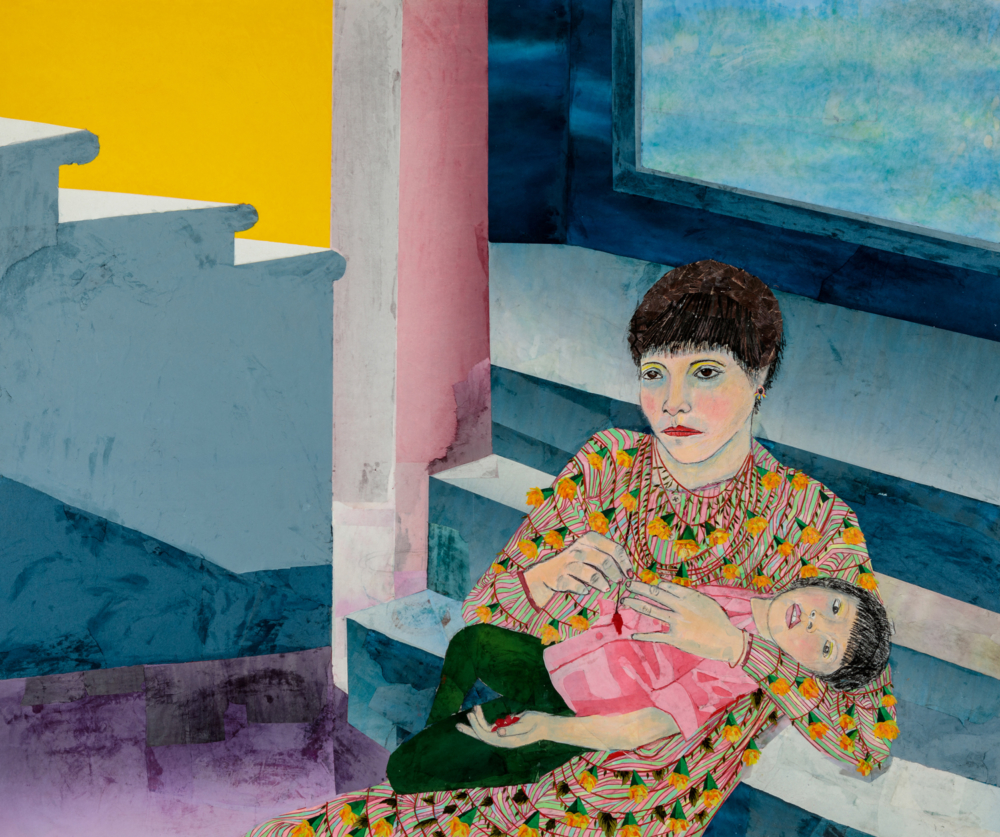
“‘Genipa’ is a portrait of mother and son. Again, the figures are in a vague interior space, and the focus is on their uncertain future, and their close bond. The mother wears a cape and is prepared to defend herself and her son against a looming threat. Her cape is like her armor. When I made this work, I was thinking about the Trump administration’s family separation policy and all of the families that were torn apart at the border.”
———
“The Reckoning of Time”
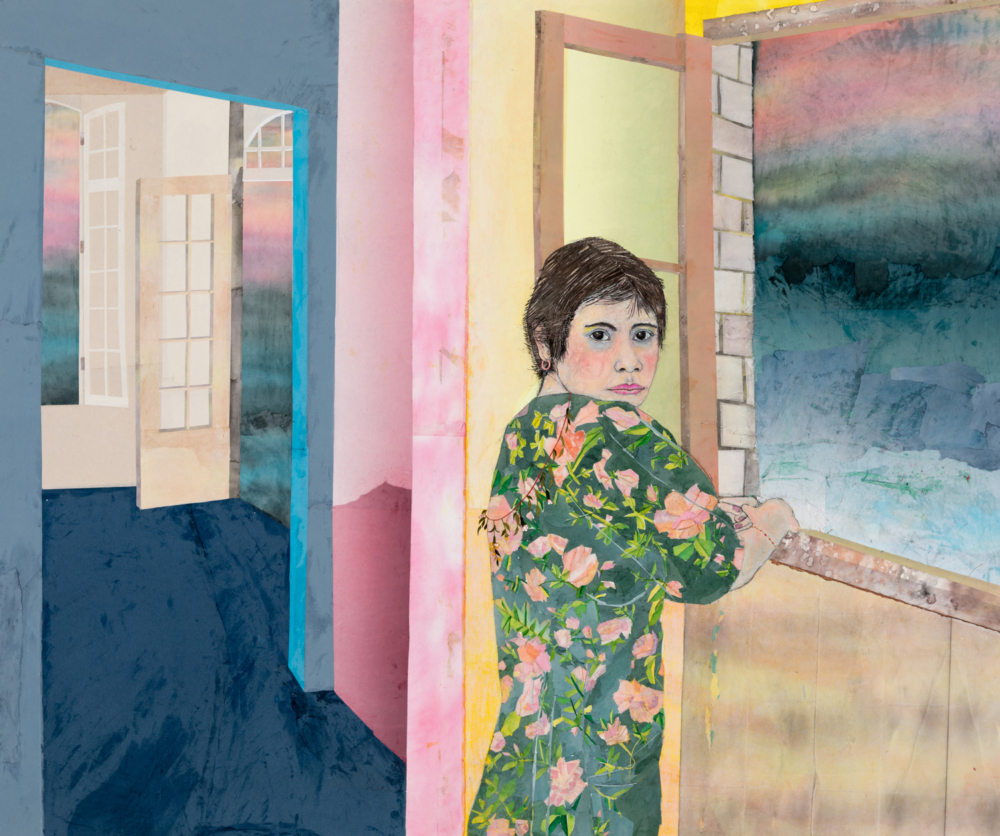
“This a strange, dreamlike environment. There is separation between the interior and exterior, but the boundaries are murky. Outside the windows, the sky, earth, and ocean bleed into one another and exist as one. The walls hold the woman within, but could also be made of the same material as what is without. As she commingles with her environment, she’s filled with the same pink and blue matter as exists outside her physical form. This boundary-less existence is achieved when time stops altogether. The only discernible thing that remains is the human. In discourse about immigration, people focus on the hypothetical, not on what is most important: the people. Who are these people, who are these families, and how can we help? I try to remind people of the importance of this with my work.”
———
“A Universe of One”
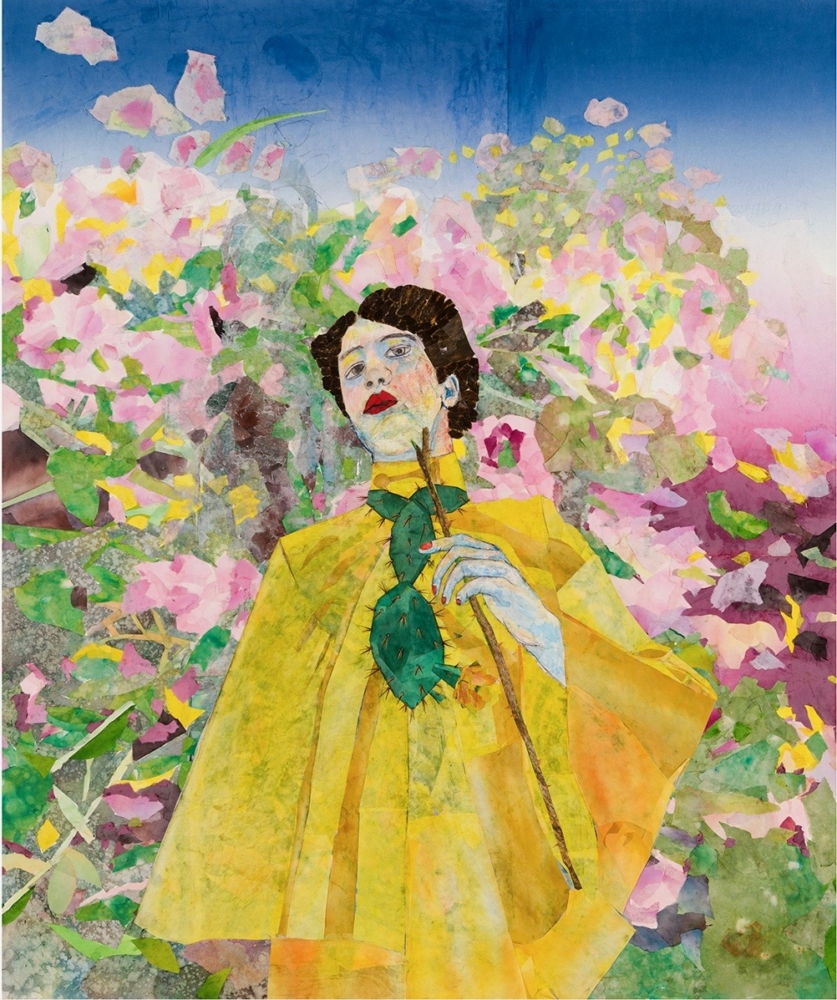
“‘A Universe of One’ is a portrait of a very powerful woman. She’s wearing a cactus as part of her armor. Most of the characters in my paintings are women who embody the power and courage I know to be within all women. At the same time, I know inner strength can be hard to reach. I believe fantasy can empower us to see what is within and give us strength in areas where it once was lacking. In my work, I highlight the many different roles women play in society. We are mothers, we are sisters, we’re friends. We are everything. I want to bring to my work all the different sides of what it means to be a woman, and what it means to be a woman from Latin America.”

